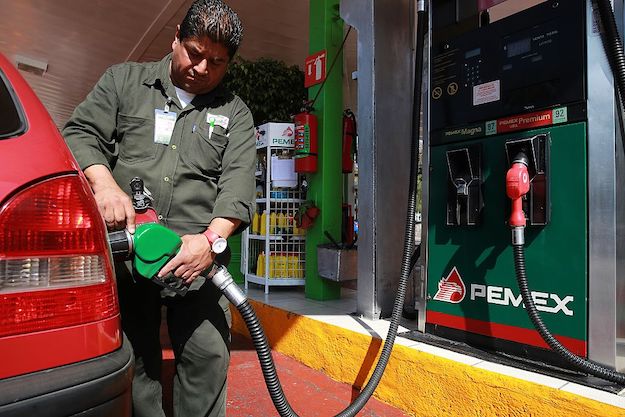Mexico’s President Andrés Manuel López Obrador (AMLO) wants to return his country to big-league oil status. But to do that, he’ll first need to adopt a more realistic view of Mexico’s economic circumstances – and rethink policies that have stymied its hydrocarbons potential.
Less than 20 years ago, Mexico was the world’s sixth largest oil producer and one of the largest suppliers to the United States. Since then, the nation’s oil sector has been in dramatic decline. After peaking at 3.6 million barrels per day (bpd) in 2004, Mexican oil production fell to 1.7 million bpd in 2018, the lowest level since 1980.
Successive administrations have tried to reverse the trend. In 2013, former President Enrique Peña Nieto introduced a major energy sector reform aimed at opening up Mexico’s exploration and production sector to private investment, which had been closed since the 1930s. Bidding auctions for private companies were set up, with early rounds resulting in 107 contracts that could bring additional production of up to 500,000 bpd during the next 10-15 years.
AMLO, however, has put all future auctions on hold, while also announcing that by 2024 – at the end of his administration – state oil company Pemex alone will have raised production by more than 1 million bpd to nearly 2.7 million bpd. Many analysts believe a rise of up to 150,000 bpd is possible, but that adding any more under current policies is unlikely, especially given the massive increase in capital expenditures it would require.
Once a source of significant government revenues, Pemex is now a drag on government coffers, and declining oil production has hampered the economy. In its latest World Economic Outlook, the IMF projected Mexico’s economic growth rate for this year at 0.4%, and 1.3% in 2020, a far cry from the 2-3% average growth rates seen in the previous five years. The Mexican central bank has said that the economy will continue to grow below potential for the foreseeable future.
The government wants to boost Pemex’s capital expenditure to $21 billion in the medium term, from just $7.5 billion in 2018. Few think this is viable. The amount is well over the company’s cash flow as well as the transfers it can realistically expect from the government. Pemex, with total debt of around $111 billion at the end of 2018, is already the most indebted oil company in the world. Fitch downgraded its debt to junk status last June. Mexico’s treasury ponied up $5 billion to help Pemex pay down debt in July and avoid a downgrade from Moody’s and S&P, and pledged $2.3 billion for 2020 and to reduce the company’s tax burden by $2 billion.
This approach is not sustainable, and Mexico has better options.
To mobilize more resources for the sector, the government should promote joint ventures between Mexico’s private pension funds (AFORES) and Pemex. Pension savings are now close to $250 billion, invested mostly in government paper. The AFORES are eager to diversify their portfolios and find attractive investment opportunities that suit the long-term interests of Mexican workers. A special investment vehicle, with strong corporate governance and transparent accounting rules, could allow the AFORES to participate in projects that increase oil production in blocks owned by Pemex that have proven potential. A $25 billion investment plan over the next five years is something that the pension funds could accommodate in their portfolios, with a higher expected return than the assets they currently hold.
Mexico’s economic and energy outlook would also benefit from a reconsideration of policies that ban hydraulic fracturing. Mexico has the fourth largest shale gas reserves in the world, mostly in the Burgos basin, a geological extension of the Eagle Ford shale play on the U.S. side of the border. But Mexico cannot exploit them because of the ban, even though it is becoming more and more dependent on imported gas from the United States. Unleashing this power could boost the national economic outlook.
The most critical step to rescuing Mexico’s energy industry, however, is a reengagement with the private sector. The administration should resume the bidding rounds that were scheduled to take place this year and that were put on hold. Pemex needs to upgrade its own capabilities. The best way to do that is to have Pemex both work with other companies and compete against them. Mexico’s strong sense of national pride in its oil sector has always made private participation in the energy industry difficult, but the benefits will outweigh the costs.
All of these suggestions involve difficult decisions that challenge Mexico’s perception of its energy resources and the realities it is facing – both in economic and energy terms. Mexico could potentially add a million bpd in production by 2025. To achieve that goal, the government must mobilize pension savings in order to bring in new capital to Pemex and renew bid rounds with the private sector. If this does not happen, the best scenario is that oil and gas production will stabilize at its current level and remain a drag on Mexico’s economy, rather than energizing it.
—
Cárdenas is a visiting research fellow at the Center on Global Energy Policy at Columbia University. He was finance minister of Colombia from 2012-18.









